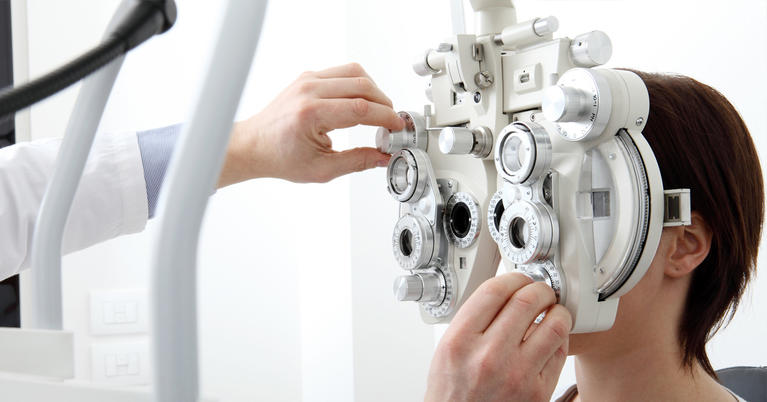Andalusia Eye Center: Premier Services for Vision Modification
Andalusia Eye Center: Premier Services for Vision Modification
Blog Article
The Pros and Disadvantages of Different Refractive Surgical Treatments for Boosted Eyecare

LASIK Surgery
LASIK surgical procedure is a typically executed refractive treatment that aims to fix vision issues such as farsightedness, nearsightedness, and astigmatism. This medical strategy has obtained popularity because of its effectiveness in supplying individuals with more clear vision and decreasing their reliance on glasses or get in touch with lenses. During the procedure, a thin flap is created on the cornea, and a laser is made use of to reshape the underlying tissue, correcting the refractive error. The flap is then rearranged, permitting quick healing and minimal discomfort for the patient.
One of the main benefits of LASIK surgical treatment is the quick enhancement in vision experienced by lots of individuals. The majority of individuals notice a significant improvement in their eyesight quickly after the treatment, with very little downtime needed for recovery. Furthermore, LASIK is recognized for its high success price and reduced incidence of issues when done by skilled specialists. Nonetheless, like any type of operation, LASIK likewise carries some dangers, including dry eyes, glow, halos, and under or overcorrection of vision. It is vital for people thinking about LASIK surgical treatment to go through a complete examination by an eye treatment expert to establish if they appropriate candidates for the treatment.
PRK Treatment
The PRK treatment, likewise called Photorefractive Keratectomy, is a sort of refractive surgical treatment that intends to correct vision problems comparable to LASIK surgical treatment. Unlike LASIK, which involves developing a flap in the cornea, PRK services the surface area layer of the cornea. During the PRK treatment, the outer layer of the cornea, called the epithelium, is gotten rid of to allow reshaping of the underlying corneal tissue with an excimer laser. This improving helps to fix refractive errors such as nearsightedness, astigmatism, and farsightedness.
One of the benefits of PRK over LASIK is that it eliminates the threat of flap-related difficulties given that no flap is developed throughout the surgical treatment. In spite of the longer healing duration, PRK can be an appropriate choice for individuals seeking vision correction surgery.
SMILE Surgical Procedure
An innovative refractive surgery technique gaining popularity in the area of ophthalmology is SMILE Surgical treatment. Little Laceration Lenticule Removal (SMILE) is a minimally invasive procedure that fixes vision by improving the cornea utilizing a femtosecond laser. Unlike standard LASIK surgical treatment, SMILE Surgical treatment involves producing a little cut in the cornea to extract a lenticule, which results in less disturbance to the corneal framework and potentially faster recovery times.
Among the main advantages of SMILE Surgery is its capacity to deal with nearsightedness (nearsightedness) and astigmatism with high precision, bring about exceptional visual outcomes for people. The minimally intrusive nature of the procedure also reduces the threat of problems such as dry eye syndrome, making it a favorable choice for you can try this out individuals seeking refractive surgical treatment.

LASEK Technique
Having explored the advantages and factors to consider of SMILE Surgical treatment, an additional noteworthy refractive surgical procedure technique worth taking a look at is the LASEK Technique. LASEK, which means Laser-Assisted Subepithelial Keratectomy, is a kind of laser eye surgical procedure that aims to deal with refractive errors such as myopia (nearsightedness), hyperopia (farsightedness), and astigmatism.
Unlike LASIK, LASEK does not include producing a corneal flap. Rather, during a LASEK treatment, the doctor uses a watered down alcohol option to loosen the thin outer layer of the cornea, called the epithelium. This layer is after that delicately moved apart to enable the laser to reshape the underlying corneal tissue. As soon as the cornea has actually been reshaped to the wanted level, the epithelial layer is rearranged.
Among the primary benefits of LASEK is that it can be appropriate for individuals with thin corneas who might not be good prospects for LASIK. In addition, LASEK typically results in very little post-operative pain and a quicker recovery time contrasted to PRK. The visual recuperation procedure with LASEK may be a little longer than with LASIK.
Implantable Call Lenses
Implantable Get in touch with Lenses use a long-lasting vision correction remedy for people seeking a choice to typical call lenses or glasses. These lenses, additionally understood as phakic intraocular lenses, are operatively placed into the eye to fix refractive errors such as nearsightedness (nearsightedness), hyperopia (farsightedness), and astigmatism. neurologist Andalusia. Unlike standard get in touch with lenses that rest on the surface of the next eye, implantable get in touch with lenses work within the eye itself, giving clear vision without the demand for everyday upkeep or elimination
Among the essential advantages of implantable contact lenses is their durability. Once placed, they can remain in the eye indefinitely, using consistent and secure vision improvement. Furthermore, these lenses can be an excellent alternative for individuals who are not good prospects for laser eye surgery or who choose a relatively easy to fix vision improvement treatment.
Nevertheless, implantable get in touch with lenses do bring some threats, including the capacity for cataracts or boosted eye stress. It is crucial for individuals considering this alternative to speak with an eye treatment professional to figure out if implantable contact lenses are the ideal option for their particular requirements and eye health and wellness.
Conclusion
In final thought, each type of refractive surgical procedure has its very own benefits and negative aspects. LASIK surgery is preferred for its fast recuperation time, while PRK treatment might be ideal for individuals with slim corneas.

Overall, SMILE Surgical treatment visit this site right here offers an appealing choice for people looking to enhance their vision with refractive surgical procedure.
Report this page